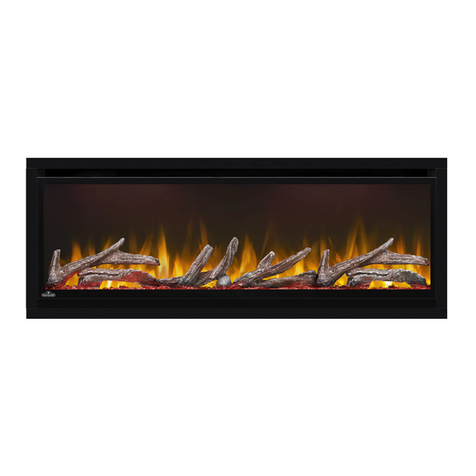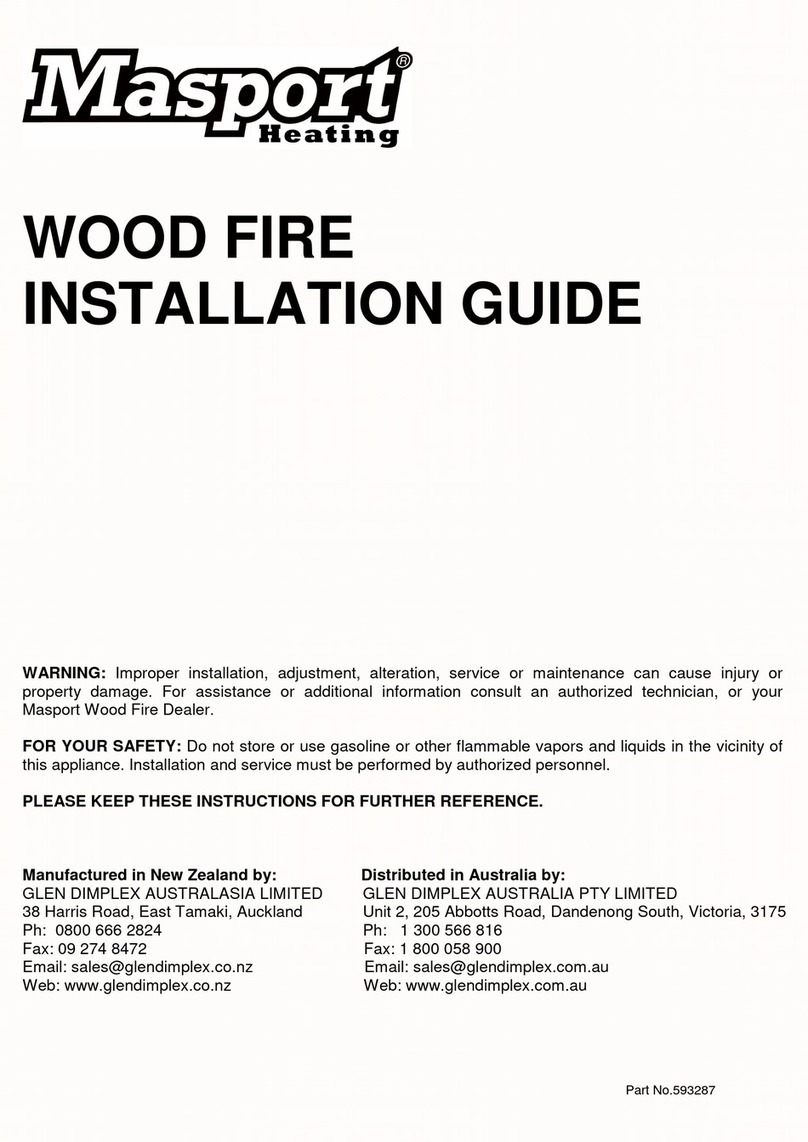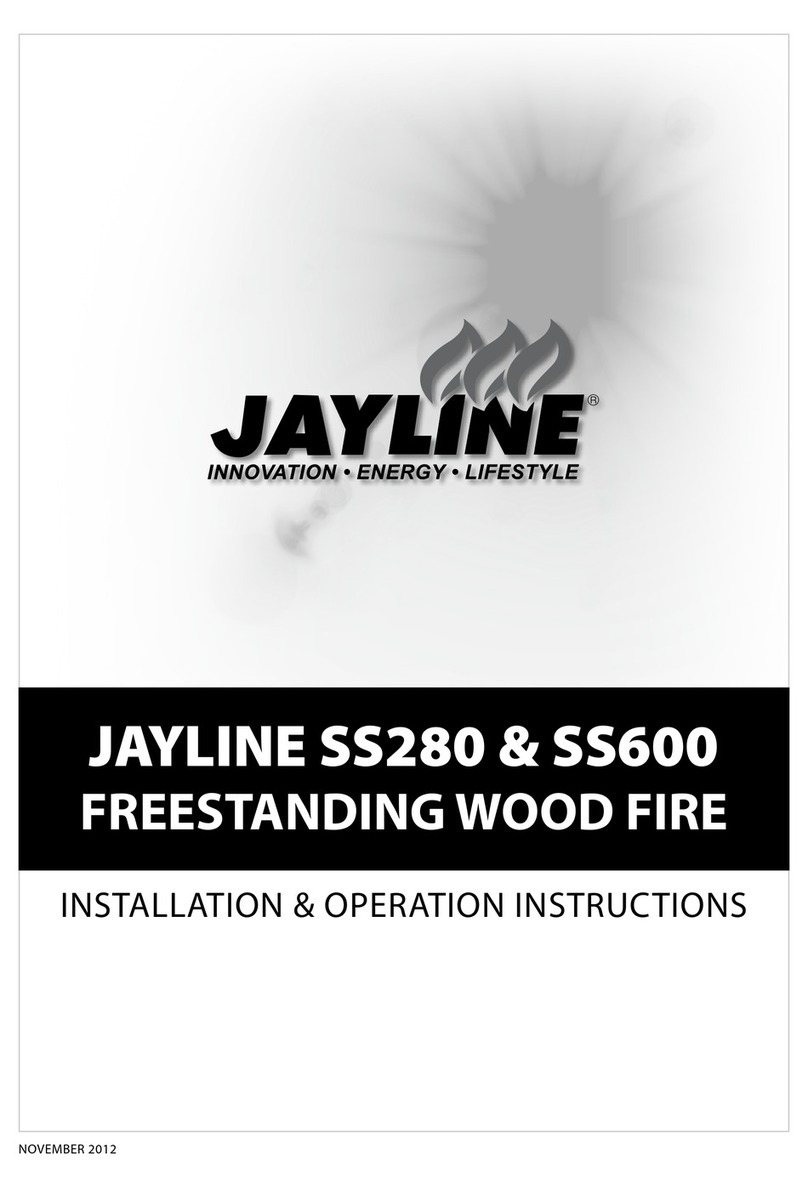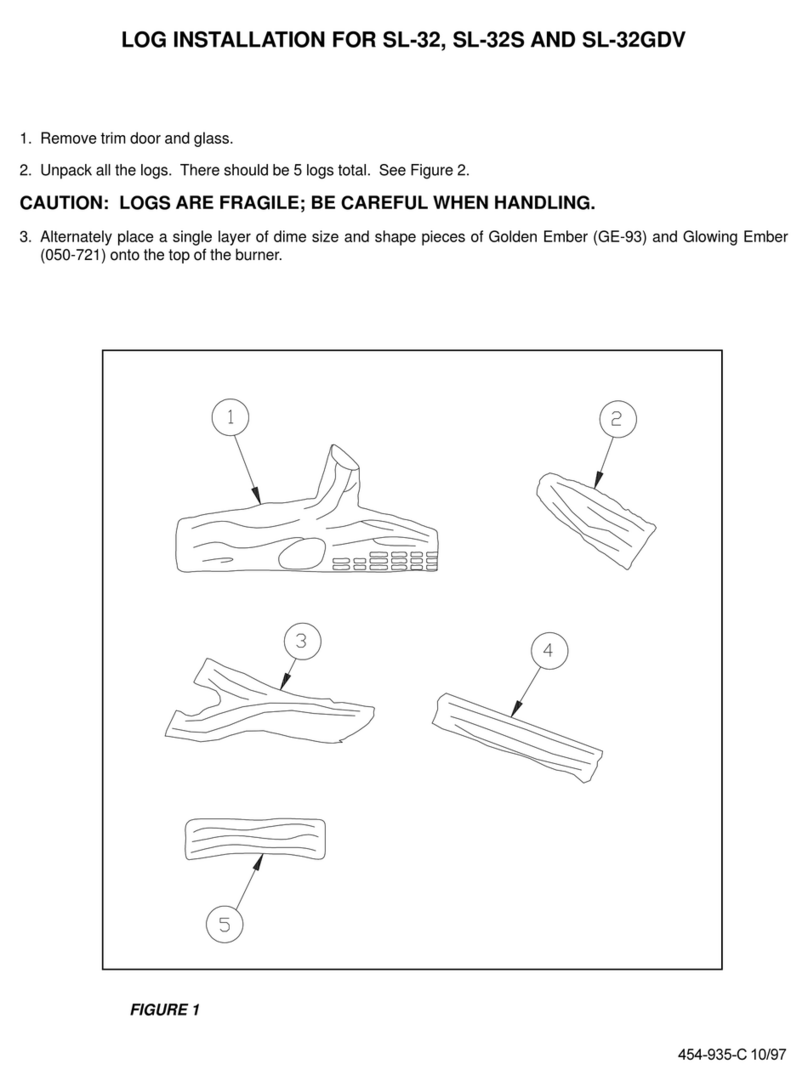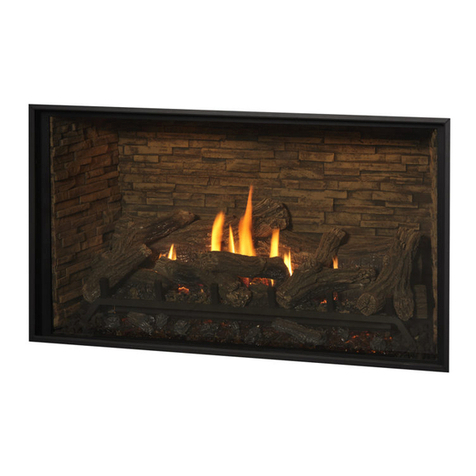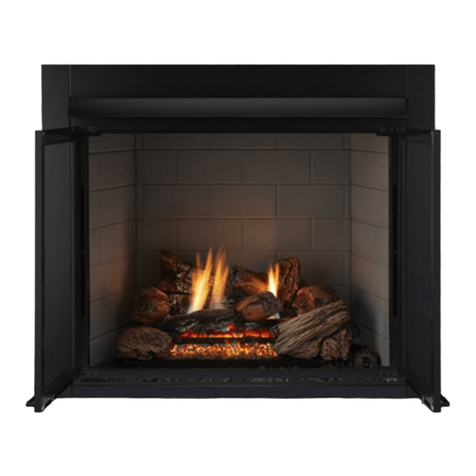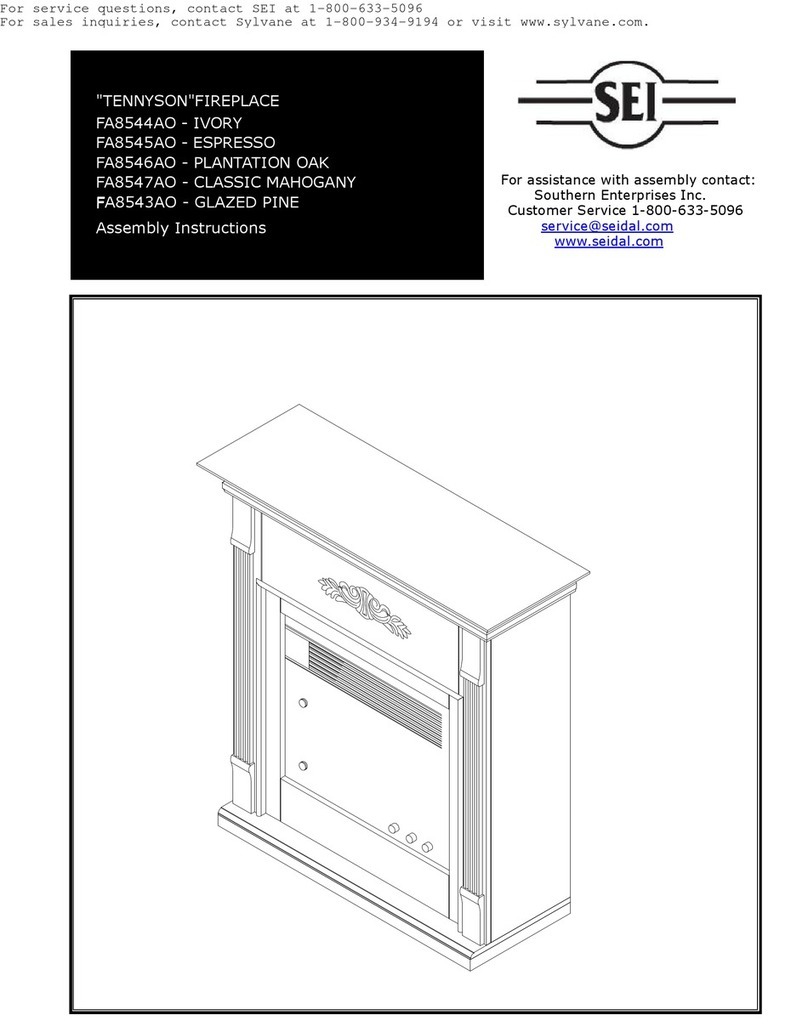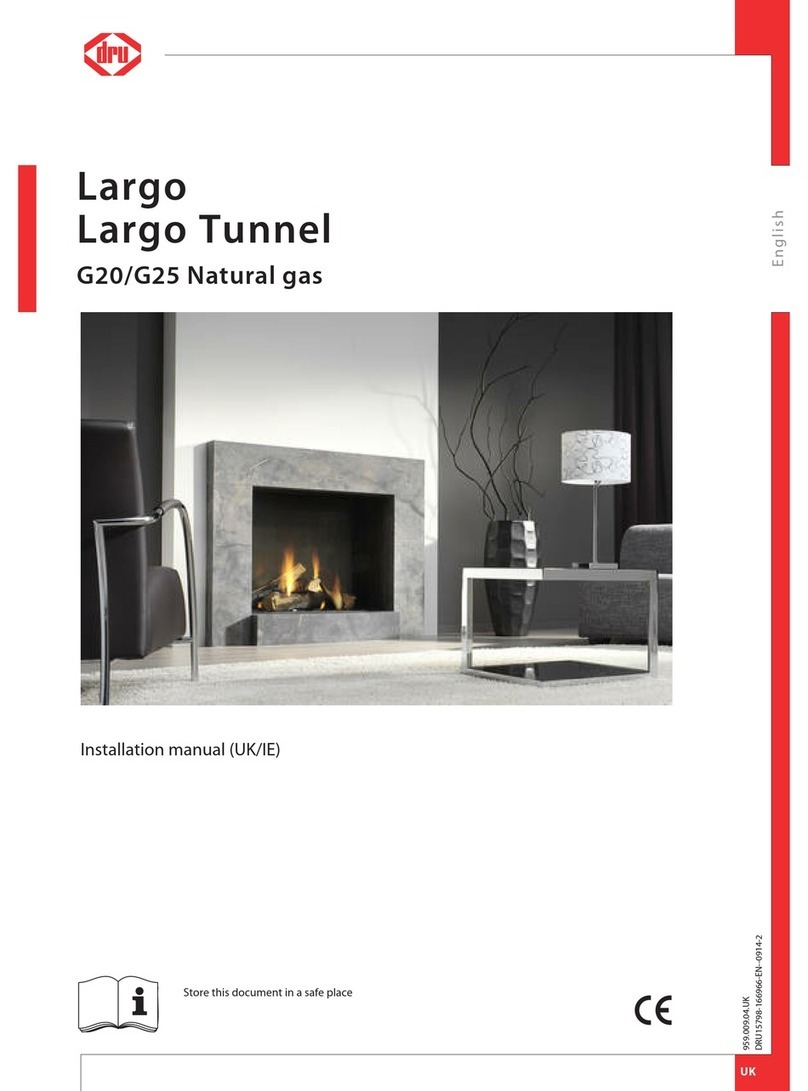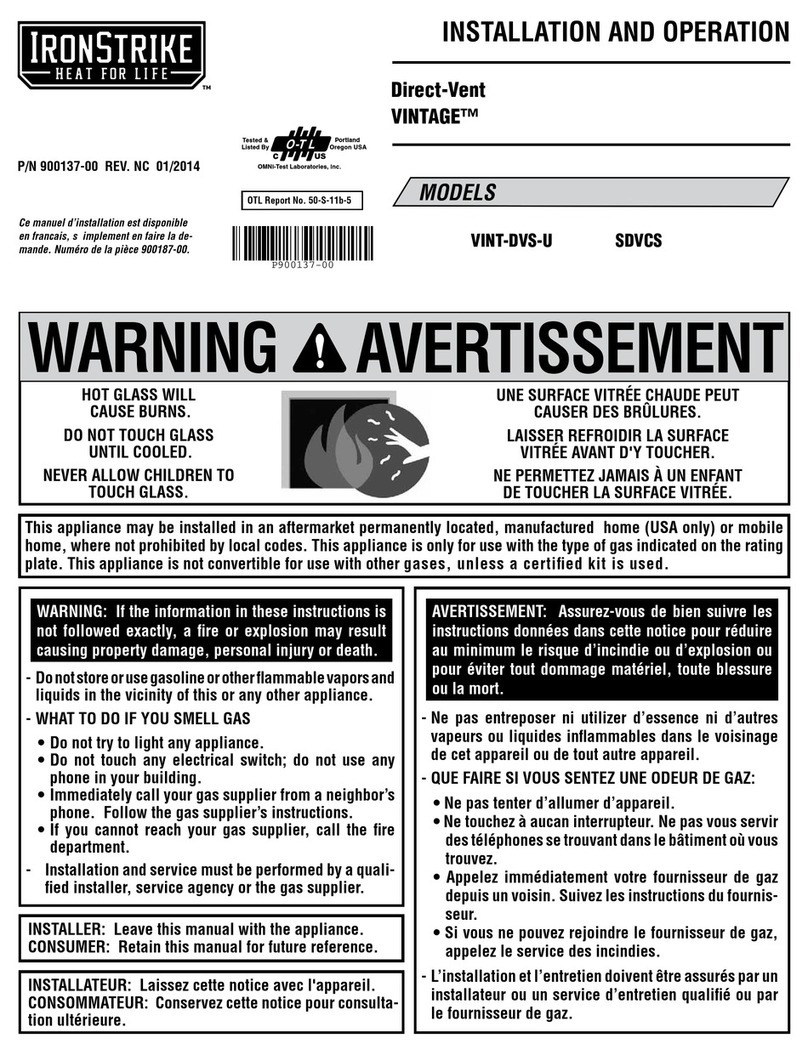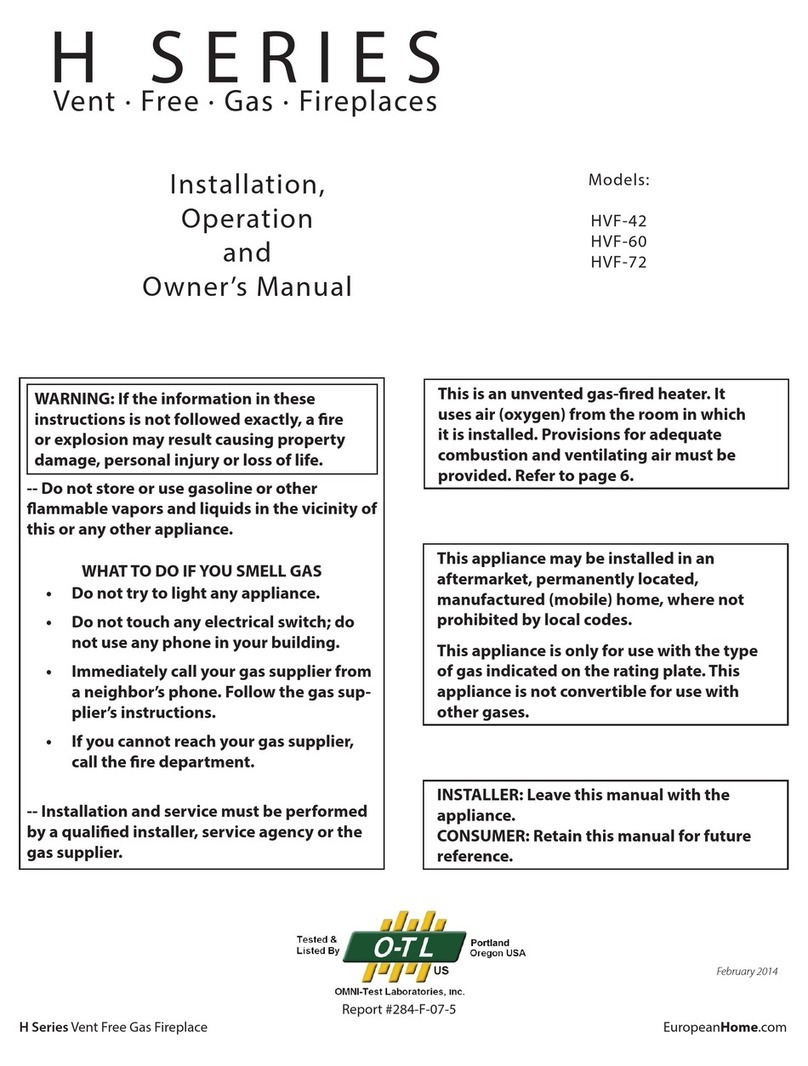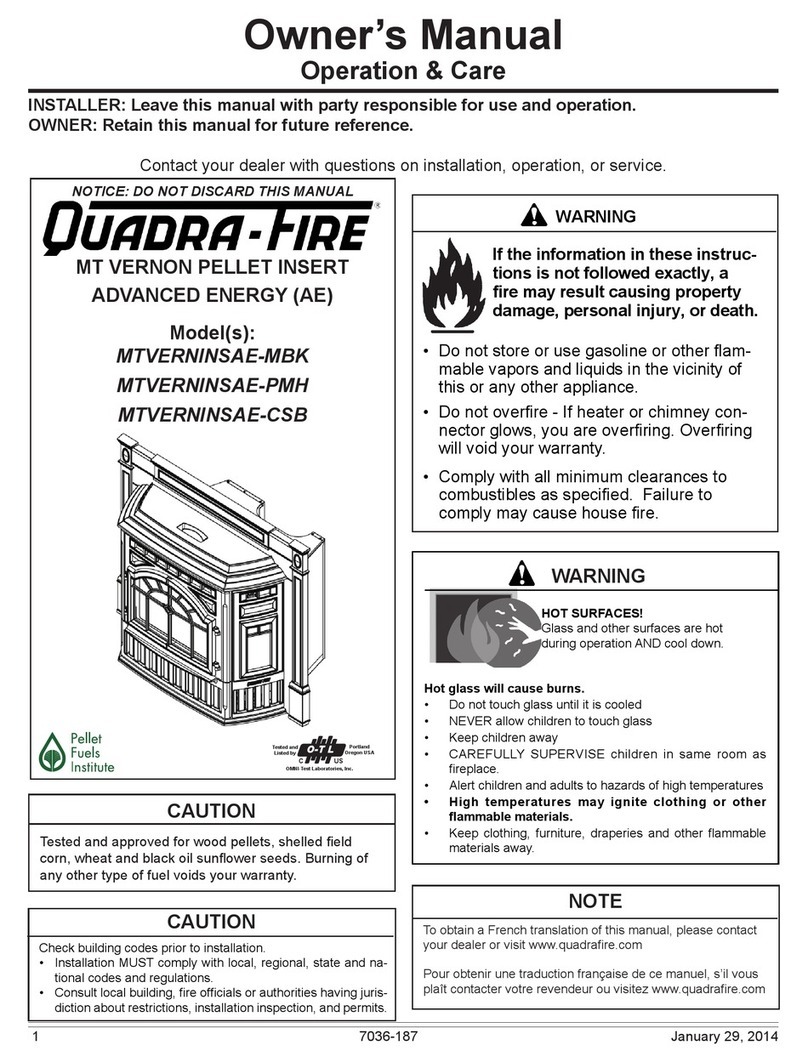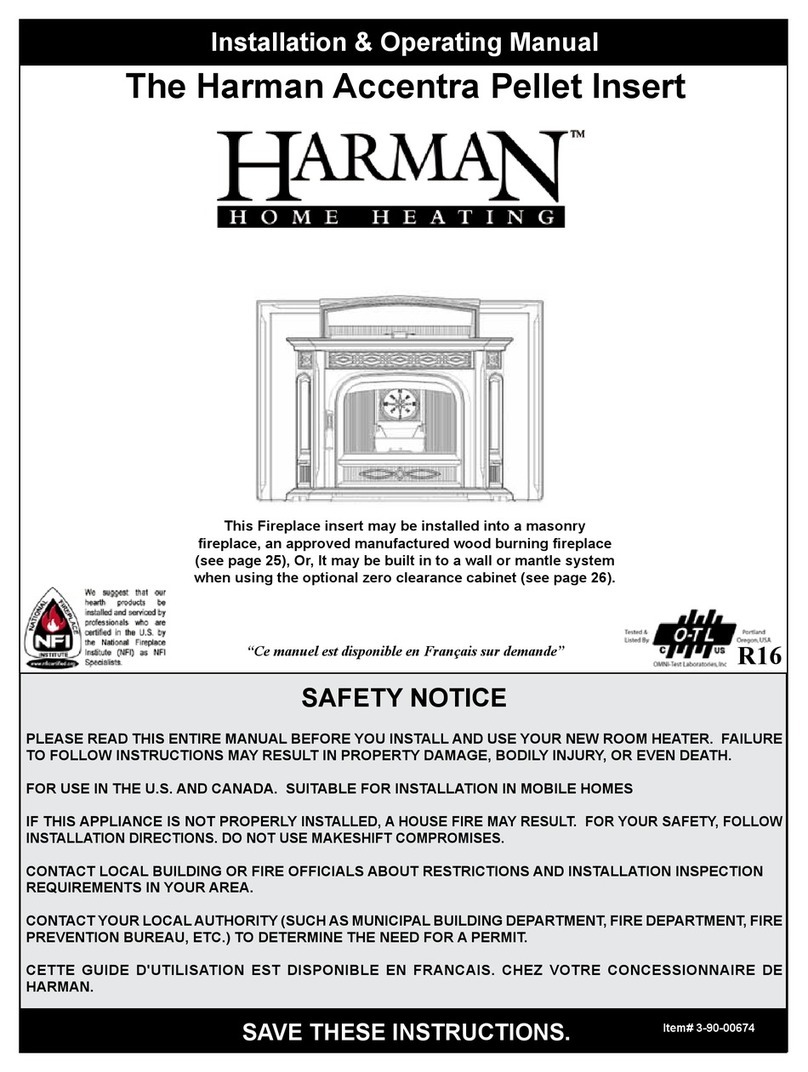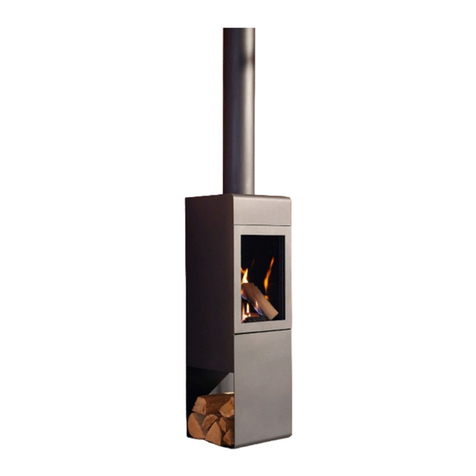4
After the chimney heats up, you can partially or even completely close the primary air intake,
based on the target output of the replace stove. It is also possible to reduce the fuelling or
limit the chimney draught by attaching a draught stabiliser. This is recommended especially
for a chimney draft around and above 20Pa. The replace and ashpan covers must always be
closed except for starting operation, adding fuel and removing solid combustion remnants to
prevent exhausts entering the room. Some replace stoves are equipped with a heat
accumulation exchanger, improving the eciency of the replace stoves and maximally
utilizing the fuel energy.
Some replace stoves are manufactured with a central air intake (CAI). This allows air to ow
into the combustion chamber in the replace stove from the exterior OR adjoining room,
halls, technical rooms etc. Fireplace stoves with a CAI are not dependant on the amount of air
in the heated area.
Thus, they not only contribute to a pleasant atmosphere in your home, but also reduce energy
expenses (since heated air already in the room is not consumed).
Fireplace stoves with CAI are very suitable for installation into low-energy houses. It is also
possible to equip the heating system of some replace stoves with CAI with electronic
combustion regulation to increase comfort. This can additionally increase the combustion
process and stoking intervals, increase operation safety and prevent uneconomic heating
and over-heating of replace stoves (the shutter of the central air intake is controlled by a
control unit and servomotor in relation to the current combustion phase and output exhaust
temperature).
In all cases when using the direct air connection the installer is required to install and com-
mission the appliance inline with current Building Regulations, manufacturer’s instructions
and any commissioning guidelines for a direct air kit, (example: the HETAS Direct Air Supply
guidelines TN010, TN011, TN012. Details are also going to be included in the next revised
standard of BS 8303). Details are available on request.
Warning: The replace stoves are not manufactured to provide continual heating and are
intended for periodic interrupted operation, mostly due to the need to empty the ashpan
when the ash has cooled down.
3. Safety regulations
Special care must be taken when installing the stove such that the requirements of the
Health and Safety at Work Act are met.
A supply of sucient amount of combustion air and room ventilation air must be ensured
when the replace stoves are in operation, especially with another heat device running
simultaneously. The regulation grate for combustion, ventilation and heating air must not be
obstructed.
When stoking fuel, always open the door very slowly. You will prevent smoke and ash from
escaping into the room. The replace stoves require casual attendance and inspection.
Flammable fuels must not be used for stoking or heating! In addition, burning plastic material
of any kind, wood materials with various chemical bonding agents (chipboards, etc) or
unsorted domestic waste with remaining plastics is prohibited.
Make sure to prevent children from handling the replace stoves during heating. The stove
may only be operated by an adult person! A reguard to BS 8423:2010 should be tted in the
presence of children, aged and/or inrm persons. During heating all handles and knobs must
be operated using a pair of tongs, hook or by a hand protected by a glove due to the risk of
burns. Objects made from ammable materials that could be set on re must not be stored
on the replace stoves during operation and while hot.
